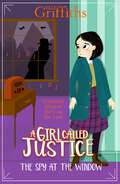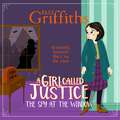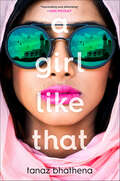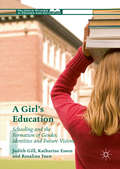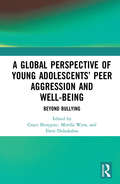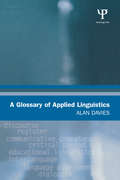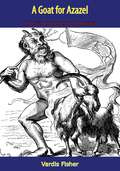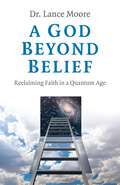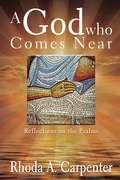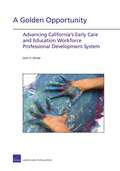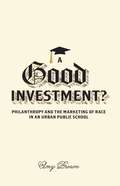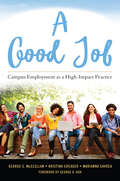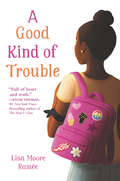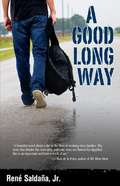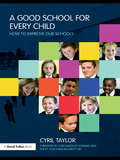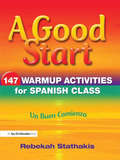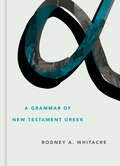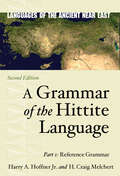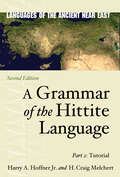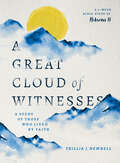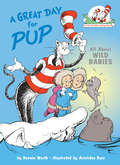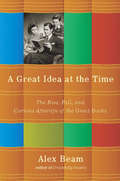- Table View
- List View
A Girl Called Justice: Book 4 (A Girl Called Justice)
by Elly GriffithsJustice Jones, super-smart super-sleuth, is back for her fourth spine-tingling adventure! For fans of Robin Stevens, Katherine Woodfine and Enid Blyton.It's 1939 and war has broken out. Everything has changed at Highbury House school. The pupils have to help cook, clean and wash up, for a start! Then a boys' school is evacuated to Highbury House, and the girls have to share the building. Justice and her friends are delighted that there are still mysteries to solve, however. Like: why can they hear voices coming from an empty room? And how can there be a face at the window two storeys up?Then Justice faces her biggest challenge yet. Could there be a spy in their midst?Elly Griffiths is a bestselling, prize-winning adult crime writer best known for the Dr Ruth Galloway Mysteries.
A Girl Called Justice: Book 4 (A Girl Called Justice)
by Elly GriffithsJustice Jones, super-smart super-sleuth, is back for her fourth spine-tingling adventure! For fans of Robin Stevens, Katherine Woodfine and Enid Blyton.It's 1939 and war has broken out. Everything has changed at Highbury House school. There are no servants, for one thing, and the pupils have to help with domestic tasks. Then a boys' school is evacuated to the Romney Marsh, billeted in the same building although, of course, contact with the boys is strictly forbidden. Despite this, Justice soon strikes up a friendship with Henry, a boy who shares her dislike of games lessons. Then Justice's father suddenly goes missing... Could he be a real-life spy?Can Justice and her friends find her father - before any secrets leak?Elly Griffiths is a bestselling, prize-winning adult crime writer best known for the Dr Ruth Galloway Mysteries. (P) 2022 Hodder & Stoughton Limited
A Girl Like That
by Tanaz BhathenaA timeless exploration of high-stakes romance, self-discovery, and the lengths we go to love and be loved. Sixteen-year-old Zarin Wadia is many things: a bright and vivacious student, an orphan, a risk taker. She’s also the kind of girl that parents warn their kids to stay away from: a troublemaker whose many romances are the subject of endless gossip at school. You don't want to get involved with a girl like that, they say. So how is it that eighteen-year-old Porus Dumasia has only ever had eyes for her? And how did Zarin and Porus end up dead in a car together, crashed on the side of a highway in Jeddah, Saudi Arabia? When the religious police arrive on the scene, everything everyone thought they knew about Zarin is questioned. And as her story is pieced together, told through multiple perspectives, it becomes clear that she was far more than just a girl like that.
A Girl's Education: Schooling and the Formation of Gender, Identities and Future Visions (Palgrave Studies in Gender and Education)
by Judith Gill Katharine Esson Rosalina YuenThis book argues that educators and the general public have become complacent about girls' education as a consequence of the more recent fuss about problems for boys. After an analysis of persistent disquiet about girls' lifestyles, it uses theories of gender and education to demonstrate that girls are being produced in contradictory ways in current schooling. Many girls develop a sense of themselves through close connection with friendship groups but schooling processes typically require them to adopt the position of competitors in the end-of-school rankings and to act out their individualized positions in imagining themselves into the future. Ultimately the work offers insight and understanding leading to a less divisive educational pathway for girls.
A Global Perspective of Young Adolescents’ Peer Aggression and Well-being: Beyond Bullying
by Grace Skrzypiec Mirella Wyra Eleni DidaskalouReporting on the findings from a study of young people across 11 different world locations (Australia, Mainland China, Greece, India, Indonesia, Italy, Korea, The Philippines, Poland, Spain, and Taiwan), A Global Perspective of Young Adolescents’ Peer Aggression and Well-being looks beyond bullying to assess the harm to mental health and well-being of young people experiencing peer aggression in all its forms. The first book in a global movement that recommends a new dialogue on peer aggression, this book delves into the poorly understood nexus of peer aggression and bullying through the use of statistical data from questionnaires, as well as the students’ own words and illustrations. By considering data from multiple countries, it addresses critical questions about cultural variation in aggression and associated well-being. Addressing the issue that there is a growing focus on other forms of aggression other than bullying, A Global Perspective of Young Adolescents’ Peer Aggression and Well-being will offer invaluable insight for practicing teachers and school counsellors, as well as any researchers with an interest in the health and well-being of young adolescents.
A Glossary of Applied Linguistics
by Alan DaviesApplied Linguistics is still a growing field. Key texts and handbooks have appeared in recent years and international applied linguistics conferences and professional associations occur regularly. While Applied Linguistics continues to attract new entrants and to generate new strands of research, there is a need for a clear and concise map of the field. This is the purpose of the Glossary.The author, Alan Davies, is a well-established, well-published authority on applied linguistics. Not a typically dry dictionary, Dr. Davies infuses the alphabetical entries with a touch of humor and thought-provoking context creating an up-to-date, useful, and coherent view of applied linguistics.The Glossary compiles the most ubiquitously used terms in applied linguistics and teacher-training literature. It takes a wide-ranging view of the field, drawing not only on linguistics but including psychology, sociology, education, measurement theory, speech therapy, translation, and language planning. Other features include:*numerous cross-references to key terms;*an introduction, which discusses the difficulty of defining applied linguistics; and*a brief reading list of key text.The primary market is master's student in Applied Linguistics, Second Language Acquisition, and TESL/TEFL. Undergraduate students, particularly in language fields and in education will also find it helpful, as well as language teachers who have not themselves followed Applied Linguistics courses and who are interested in finding out about the field.
A Goat for Azazel: A Novel of Christian Origins (Testament Of Man Ser.)
by Vardis FisherLUST AND REDEMPTION, SIN AND SALVATION—THE EPIC NOVEL OF A YOUNG ROMAN IN THE FLESHPOTS OF AN ANCIENT WORLD.HE SAW HIS MOTHER BURNED AT THE STAKEThis soul-searching experience changed an innocent young Roman into a pleasure-seeking hedonist lusting for flesh. Yet, there was something about the new religion that obsessed him. What was it that made Christian martyrs go to their deaths with a smile on their lips?...Christ had preached love; only through love could man be re-born. So it was that Damon set out in search of the answers to puzzling riddles about love and lust, the spirit and the flesh, barbarian pantheism and gentle Christianity…The latest in Vardis Fisher’s TESTAMENT OF MAN series. ‘The most ambitious project in present-day fiction!’—The New York Herald TribuneDAMON SOUGHT LOVE—from Levilla, the beautiful young Christian, who withheld her ripe body from him;—from Murdia, the sensualist, who knew how to arouse men with passionate abandon;—from Ayla, the voluptuous dancing girl, whose cloying movements invited a strange relationship;—from the father he never knew; from the religion he yearned to believe in...Here is the fascinating odyssey of a young Roman who sated himself in the dissolute world of the First Century...until he finally found the goal of his quest for love in a new and sublime experience.
A God Beyond Belief: Reclaiming Faith in a Quantum Age
by Lance MooreSomething Has Gone Terribly Wrong… We face a spiritual crisis, but the extremes of religious fundamentalism on one hand, and scientific atheism on the other, offer no cure. Scepticism is soaring, especially among Millennials. Daily, we read of scandals among our politicians, priests and Hollywood stars. Mass shootings are epidemic, yet entertainment media glorifies violence. Drugs, not &“religion&” as Karl Marx claimed, are now the &“opiate of the masses". &“Christian&” TV preachers use donations to purchase private jets and mansions - while children starve. The White House has claimed that &“Truth is not the truth.&” Our leaders and institutions have lost all moral authority. A common religious response to crisis is to thump the Bible harder and louder. This book challenges us to go beyond a simple, childish belief. Dr Lance Moore offers an intelligent faith rooted in a respect for Scripture, while taking a fresh look at calcified orthodoxies. He invites readers to embrace paradox - in Spirituality and in Science - to rediscover God for our Quantum Age.
A God Who Comes Near: Reflections on the Psalms
by Rhoda A. CarpenterThis book is written to reawaken awareness of both the beauty of the psalms and their ability to speak with relevance to our contemporary culture--a generation in danger of losing the psalmist&’s voice. It is written for those who may have felt marginalized by church or society, whether from loss, tragedy, illness, or misuse of power. May this generation hear the voice of the psalmist pointing them to a God who desires honest expression, who comes close to listen to their cries, and points them to a deeper understanding of who he is and how he loves. May the words of the psalmist lead them out of isolation and into authentic community.The author&’s approach to the psalms begins with recognition of the intertwining of imagery with the literary structure of the poetry found in the psalms. The imagery in the psalms comes from an earthy connection of the psalmist with the land of scripture. Understanding the imagery allows the reader to &“see&” the psalms and receive the message. It deepens the relevance of the psalms to speak into the myriad contexts in our present day multi-cultural world. Recognition of the religious and social dynamics of ancient Israelite life--such as kingship, Zion as a place of God&’s presence, and the covenant relationship of a people with their God--provide further clues to understanding the message of the psalms.Along with the rich imagery present in the psalms, this book explores the literary structure of the poetry in the psalms. Recognition of key characteristics of Hebrew poetry allows the words to &“sing.&” In every psalm a vivid echo of ancient voices resounds, building century upon century of expression, reaching into the present. If one reads carefully, the melodies and message can be heard. The music of the psalms breathe with life and relevance.Psalms are filled with movement to hope and praise. Yet, they address the reality that life at times hurts. The psalmist gives honest voice to pain and affirms God&’s presence in the darkest moments of life. This book explores the importance of lament both individually and in community as a vehicle to healing and a deeper understanding of God&’s care.The book closes with an examination of five select psalms that are representative of different types of psalms found in the psalter. They were chosen because of personal relevance. Through imagery, structure, and voice the psalms convey movement from honest expression to hope. Hope leads to thanksgiving. Praise resounds because of who God is and how he cares.
A Golden Opportunity: Advancing California's Early Care and Education Workforce Professional Development System
by Lynn A. KarolyThis study focuses on the education, training, and ongoing professional development of early care and education (ECE) caregivers, teachers, and administrators who work with infants, toddlers, andpreschool-age children from birth to kindergarten entry in California. It aims to provide a comprehensive assessment of the state's ECE workforce professional development system and a set of recommendations for improving the system's effectiveness.
A Good Cause (Reach Into Phonics Ser.)
by Nonie K. Lesaux National Geographic Learning Sylvia Linan ThompsonNIMAC-sourced textbook
A Good Education: A New Model of Learning to Enrich Every Child
by Margaret WhiteThis book provides an answer to one of the key questions of our time: namely, what constitutes a good education. Presenting a ‘four-dimensional’ model, it directly considers the essential elements a good education should include. Through forging this framework and outlaying its origins, implications and practice, the book explains how a good contemporary education can be defined and implemented. From the premise that such educational essentials are neither the preserve of the elite nor a minimum standard, White's exploration keeps the child at the heart of the discussion, focusing on every pupil's worth, identity, interactions and development. The author offers a detailed and rigorous perspective reflecting on extensive professional experience, starting with a consideration of the current educational climate and progressing through the book's three parts: looking for a good education creating a model of good education applications, implications and implementation of the model. A Good Education recognises the transformative power of education and reflects on the importance of human factors: teachers' provision for their pupils and students' ability to flourish. This book is addressed to those actively engaged in or concerned about educational provision: graduates entering teaching, school leaders, policy-makers and parents. It also speaks more broadly to all those who know that a good education really matters.
A Good Investment?: Philanthropy and the Marketing of Race in an Urban Public School
by Amy BrownSelect students and teachers worked the room at a fundraising event for a New York City public high school Amy Brown calls College Preparatory Academy. It was their job to convince wealthy attendants that College Prep, with its largely minority and disadvantaged student body and its unusually high rate of graduation and college acceptance, was a worthy investment. To this end, students and teachers tried to seem needy and deserving, hoping to make supporters feel generous, important, and not threatened. How much, Brown asks, does competition for financing in urban public schools depend on marketing and perpetuating poverty in order to thrive? And are the actors in this drama deliberately playing up stereotypes of race and class?A Good Investment? offers a firsthand look behind the scenes of the philanthropic approach to funding public education—a process in which social change in education policy and practice is aligned with social entrepreneurship. The appearance of success, equity, or justice in education, Brown argues, might actually serve to maintain stark inequalities and inhibit democracy. Her book shows that models of corporate or philanthropic charity in education can in fact reinforce the race and class hierarchies that they purport to alleviate.As their voices reveal, the teachers and students on the receiving end of such a system can be critically conscious and ambivalent participants in a school&’s racialized marketing and image management. Timely and provocative, this nuanced work exposes the unintended consequences of an education marketplace where charity masquerades as justice.
A Good Job: Campus Employment as a High-Impact Practice
by George S. McClellan Kristina L. Creager Marianna SavocaFor many students, working while in college is a defining characteristic of the undergraduate experience. However, student workers often view campus employment as a money-making opportunity rather than a chance for personal development. Likewise, institutions often neglect to consider campus jobs as a means to education and student engagement.It is the distinction between work for remuneration and work for personal development which shapes much of the discussion of student employment throughout A Good Job. This book makes the case for campus employment as a high-impact practice in higher education and provides models for institutional efforts to implement new student employment strategies.Carefully designed campus employment opportunities can have numerous benefits, including career exploration and preparation, learning, and increased engagement leading to increased retention. The authors make the case that employment can and should be a purposeful and powerful component in any higher education institution’s efforts to support student learning, development, and success.This book is an excellent resource for anyone interested in capitalizing on the developmental and learning potential of student employment on campus.
A Good Kind of Trouble
by Lisa Moore RaméeFrom debut author Lisa Moore Ramée comes this funny and big-hearted debut middle grade novel about friendship, family, and standing up for what’s right, perfect for fans of Angie Thomas’s The Hate U Give and the novels of Renée Watson and Jason Reynolds. <P><P>Twelve-year-old Shayla is allergic to trouble. All she wants to do is to follow the rules. (Oh, and she’d also like to make it through seventh grade with her best friendships intact, learn to run track, and have a cute boy see past her giant forehead.) <P><P>But in junior high, it’s like all the rules have changed. Now she’s suddenly questioning who her best friends are and some people at school are saying she’s not black enough. Wait, what? <P><P>Shay’s sister, Hana, is involved in Black Lives Matter, but Shay doesn't think that's for her. After experiencing a powerful protest, though, Shay decides some rules are worth breaking. She starts wearing an armband to school in support of the Black Lives movement. <P><P> Soon everyone is taking sides. And she is given an ultimatum. <P><P>Shay is scared to do the wrong thing (and even more scared to do the right thing), but if she doesn't face her fear, she'll be forever tripping over the next hurdle. <P><P>Now that’s trouble, for real.
A Good Long Way
by René Saldaña Jr."Stop it. The two of you, stop it!" Roelito howls at his father and older brother as their heated argument turns into a shoving match. Beto has again come home way past curfew, smelling like a cantina. When Beto Sr. tells his son that he either needs to follow the rules or leave, the boy, a senior in high school, decides to leave, right then, in the middle of the night. Once he has walked away, though, he realizes he has nowhere to go. Maybe his best friend Jessy can help. The story of Beto's decision to run away and drop out of school is told from shifting perspectives in which the conflicted lives of Roel, Beto, and Jessy are revealed in short scenes that reflect teen-age life along the Texas-Mexico border. Each one has a good long way to go in growing up. Roel fights the teachers' assumptions that he's like Beto. Unlike his brother, Roel actually enjoys school. Jessy is smart too, but most of her teachers can't see beyond her tough-girl façade. Her parents are so busy physically fighting with each other that they don't notice her, even if she's packing a suitcase to leave. And Beto, somewhere along the way he quit caring about school. And his teachers have noticed and given up too. René Saldaña, Jr. once again writes a fast-paced, thought-provoking novel that will engage young adults in questions about their own lives and responsibilities to family, friends, and most of all, to themselves.
A Good School for Every Child: How to improve our schools
by Cyril TaylorSir Cyril Taylor has been at the heart of English education for over two decades, serving as an adviser to ten successive UK Education Secretaries and Four Prime Ministers, both Conservative and Labour, including Margaret Thatcher and Tony Blair. His passion for education has led directly to real school improvement, from the creation of City Technology Colleges to specialist schools and academies, which together now constitute over nine in ten secondary schools in England. The Specialist Schools and Academies Trust, the body he founded, is now a leading force in school improvement worldwide. A Good School for Every Child draws on that wealth of experience. While offering an insider's look at some of the key challenges in education, it is also an invaluable guide for parents and teachers interested in how our schools work today. There is a particular focus on how to raise standards in low attaining schools, improving levels of literacy and numeracy and teaching our children the skills they need for the 21st Century. This book is also a clarion call to our political leaders about the challenges that still remain: the education of children in care, the failure to stretch able youngsters and the problems recruiting enough good science teachers. Education is more open today than ever before, with league tables and inspection reports. Yet for many outsiders, it can seem a world clouded by its own language and rituals. Cyril Taylor opens the door to that world, through stories of inspirational headteachers and successful schools. By doing so he offers a vision that is both instructive and inspirational, one that shows how schools working with parents and the wider community can raise the standards of achievement for all their pupils.
A Good Start: 147 Warm-Up Activities for Spanish Class
by Rebekah StathakisBegin each Spanish class with lively, interactive activities from award-winning foreign-language teacher Rebekah Stathakis. With ideas for writing and speaking exercises, impromptu presentations, and more, these warm-ups will immerse students in Spanish, engaging them in their language instruction effectively and immediately.
A Grammar of New Testament Greek (Eerdmans Language Resources)
by Rodney A. WhitacreA reader&’s guide to the morphology and syntax of Koine Greek From the pen of a seasoned instructor of biblical Greek, this book functions as both an essential resource for second-year students and an invaluable asset for all readers as they continue to hone and deepen their linguistic skills. It begins with a basic overview of the language for new learners and for those looking for a brief refresher before moving into nuanced matters of morphology and syntax. Whitacre&’s aim is ultimately to help readers understand the subtleties of the language on the pages of the New Testament; thus, he engages with the biblical text both grammatically and exegetically, so that readers can experience its full power and beauty. Including numerous illustrative examples throughout and several useful appendices at the end, A Grammar of New Testament Greek is indispensable both as a textbook and as a reference for all readers of the Greek New Testament—and other texts written in Koine, such as the Septuagint and the Apostolic Fathers.
A Grammar of the Hittite Language: Part 1: Reference Grammar (Languages of the Ancient Near East)
by Harry A. Hoffner Jr. H. Craig MelchertSince its publication in 2008, A Grammar of the Hittite Language has been the definitive Hittite reference and teaching tool. This new edition brings Hoffner and Melchert’s essential work up to date, incorporating the dramatic progress achieved in the field over the past fifteen years.Heavily revised and expanded, the second edition recasts the discussion of topics to better serve the linguistically informed reader. A reorganized presentation of the synchronic facts makes them accessible to both Hittitologists and linguists interested in Hittite for historical or typological purposes. Part 1 provides a thorough overview of Hittite grammar that is grounded in abundant textual examples. Part 2 is a tutorial that guides students through a series of graded lessons with illustrative sentences for translation. The tutorial is keyed to the reference grammar and includes extensive updated notes. Taken together with Part 2: Tutorial, which guides students through a series of graded lessons keyed to this reference grammar, the work remains the most comprehensive and detailed Hittite grammar ever produced.
A Grammar of the Hittite Language: Part 2: Tutorial (Languages of the Ancient Near East)
by Harry A. Hoffner Jr. H. Craig MelchertDesigned to accompany A Grammar of the Hittite Language, Part 1: Reference Grammar, this tutorial guides language learners through a series of graded lessons with illustrative sentences for translation drawn from actual Hittite texts. The tutorial is keyed to the reference grammar and provides extensive and updated notes, a vocabulary list for each lesson, and a comprehensive glossary.
A Great Cloud of Witnesses: A Study of Those Who Lived by Faith (A Study in Hebrews 11)
by Trillia J. NewbellRejuvenate your faith through the stories of the faithful.Throughout Scripture we find countless stories of God&’s faithfulness—we also find countless stories of the people who remained faithful to Him. To strengthen and deepen your own faith, enter the stories of God&’s imperfect yet faithful people in A Great Cloud of Witnesses, a six- or eight-week Bible study by Trillia Newbell. This study dives into Hebrews 11, examining the lives of Rahab, Enoch, Gideon, Sarah, and many more whose faiths withstood the tests of their days. Each devotional invites you into the lives of ordinary people who lived by faith and concludes with reflection questions so that you can consider how your story connects with those found in Scripture. By studying the great cloud of witnesses found in Hebrews 11, and others who have gone before us, you will learn to imitate their faith while clinging to the One who is always faithful as you run the race God has set before you.
A Great Cloud of Witnesses: A Study of Those Who Lived by Faith (A Study in Hebrews 11)
by Trillia J. NewbellRejuvenate your faith through the stories of the faithful.Throughout Scripture we find countless stories of God&’s faithfulness—we also find countless stories of the people who remained faithful to Him. To strengthen and deepen your own faith, enter the stories of God&’s imperfect yet faithful people in A Great Cloud of Witnesses, a six- or eight-week Bible study by Trillia Newbell. This study dives into Hebrews 11, examining the lives of Rahab, Enoch, Gideon, Sarah, and many more whose faiths withstood the tests of their days. Each devotional invites you into the lives of ordinary people who lived by faith and concludes with reflection questions so that you can consider how your story connects with those found in Scripture. By studying the great cloud of witnesses found in Hebrews 11, and others who have gone before us, you will learn to imitate their faith while clinging to the One who is always faithful as you run the race God has set before you.
A Great Day for Pup: All About Wild Babies (The Cat in the Hat's Learning Library)
by Bonnie WorthLaugh and learn with fun facts about wild baby animals—joeys, cubs, chicks, and more—all told in Dr. Seuss&’s beloved rhyming style and starring the Cat in the Hat! &“Climb in, Dick and Sally. It is time now to go to wherever on earth the wild babies grow.&” The Cat in the Hat&’s Learning Library series combines beloved characters, engaging rhymes, and Seussian illustrations to introduce children to non-fiction topics from the real world! Meet wild baby animals from around the world and learn: how joeys stay safe in their mothers&’ poucheshow baby crocodile eggs hatch undergroundhow elephants help raise each other&’s youngand much more!Perfect for story time and for the youngest readers, A Great Day for Pup: All About Wild Babies also includes an index, glossary, and suggestions for further learning. Look for more books in the Cat in the Hat&’s Learning Library series!High? Low? Where Did It Go? All About Animal CamouflageIs a Camel a Mammal? All About MammalsThe 100 Hats of the Cat in the Hat: A Celebration of the 100th Day of SchoolWould You Rather Be a Pollywog? All About Pond LifeHappy Pi Day to You! All About Measuring CirclesI Can Name 50 Trees Today! All About TreesFine Feathered Friends: All About BirdsMy, Oh My--A Butterfly! All About ButterfliesOh Say Can You Seed? All About Flowering PlantsInside Your Outside! All About the Human BodyIce is Nice! All About the North and South Poles
A Great Idea at the Time: The Rise, Fall, and Curious Afterlife of the Great Books
by Alex BeamToday the classics of the western canon, written by the proverbial "dead white men,” are cannon fodder in the culture wars. But in the 1950s and 1960s, they were a pop culture phenomenon. The Great Books of Western Civilization, fifty-four volumes chosen by intellectuals at the University of Chicago, began as an educational movement, and evolved into a successful marketing idea. Why did a million American households buy books by Hippocrates and Nicomachus from door-to-door salesmen? And how and why did the great books fall out of fashion? In A Great Idea at the Time Alex Beam explores the Great Books mania, in an entertaining and strangely poignant portrait of American popular culture on the threshold of the television age. Populated with memorable characters, A Great Idea at the Time will leave readers asking themselves: Have I read Lucretius’s De Rerum Natura lately? If not, why not?
